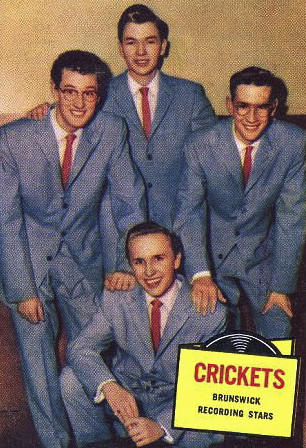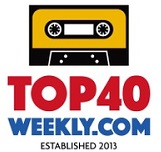Buddy Holly & The Crickets – Biography, Songs, Albums, Discography & Facts

QuickLinks
Buddy Holly Biography
American singer-songwriter Charles Hardin Holley, better known by his stage name Buddy Holly, was a key and innovative character in mid-1950s rock & roll. He was raised in a musical family and learnt to play the guitar and sing with his siblings. He was born in Lubbock, Texas, during the Great Depression. His approach was influenced by gospel music, country music, and rhythm and blues performers that he and his high school buddies performed in Lubbock.
On September 7, 1936, Holly was born in Lubbock, Texas. In 1952, he made his debut on neighborhood television; the following year, he and his friend Bob Montgomery founded the ensemble “Buddy and Bob.” After performing as Elvis Presley‘s opener in 1955, he made the decision to pursue music as a vocation. Three times that year, he served as Presley’s opening act, and his band’s sound changed altogether from country and western to rock and roll. When he opened for Bill Haley & His Comets in October of that same year, Nashville scout Eddie Crandall noticed him and helped him secure a deal with Decca Records.
Owen Bradley, who had gained notoriety for orchestrating country successes for performers like Patsy Cline, oversaw Holly’s recording sessions at Decca. Holly traveled to producer Norman Petty in Clovis, New Mexico and recorded a demo of “That’ll Be the Day,” among other songs, because she was dissatisfied with Bradley’s musical taste and studio management. As soon as Petty took over as the group’s manager, he forwarded the band’s tape to Brunswick Records, who issued it as a single under the name “The Crickets,” which later became the moniker of Holly’s band. “That’ll Be the Day” topped the US and UK singles charts in September 1957 when the band was on tour. In October, “Peggy Sue,” another big smash, followed its popularity.
The “Chirping” Crickets, a 1957 release, peaked at number five on the UK Albums Chart. In January 1958, Holly made his second performance on The Ed Sullivan Show. Shortly after, he went on tour in Australia and the UK. He put together a new band in early 1959, including future country music superstar Waylon Jennings on bass, well-known session musician Tommy Allsup on guitar, and Carl Bunch on drums, and set out on a tour of the Midwest. He hired an airplane to get to his next performance in Moorhead, Minnesota, after one in Clear Lake, Iowa. Don McLean later alluded to this disaster as “The Day the Music Died” in his song “American Pie” since it occurred shortly after takeoff and resulted in the deaths of Holly, Ritchie Valens, The Big Bopper, and pilot Roger Peterson.
Holly penned and recorded a lot of songs during his brief career. He is frequently credited with creating the classic rock-and-roll line-up of two guitars, a bass, and drums. Later prominent music artists like Bob Dylan, The Beatles, The Rolling Stones, Eric Clapton, The Hollies (who took his name), Elvis Costello, Dave Edmunds, Marshall Crenshaw, and Elton John were all greatly influenced by him. In 1986, he was one of the first musicians to be admitted to the Rock & Roll Hall of Fame. He came in at number 13 on Rolling Stone magazine’s list of the “100 Greatest Artists.”
Buddy Holly & The Crickets Discography
Top Videos
Frequently Asked Questions
What Song Is Buddy Holly & The Crickets Famous For?
The song that made Buddy Holly & The Crickets famous is “That’ll Be the Day.” It was released in 1957 and reached number one on the Billboard charts. The song has been covered by many artists over the years, including John Lennon and Paul McCartney of The Beatles.
How Many Albums Did Buddy Holly Make Before He Died?
Buddy Holly released three studio albums during his lifetime: “Buddy Holly” (1958), “That’ll Be the Day” (1958), and “Crickets” (1957). He also posthumously released a live album, “The Buddy Holly Story, Vol. 1” (1959), which was compiled from recordings made during his final tour. Finally, a greatest hits album, “The Buddy Holly Story, Vol. 2” (1960), was released after his death. Thus, in total, Holly released four albums before he died.
What Was The Last Song Buddy Holly & The Crickets Ever Sang?
The last song Buddy Holly & The Crickets ever sang was “That’ll Be the Day”. It was released on September 3, 1957 as a single and reached number one on the Billboard charts. The song was written by Holly and recorded in just one take. It has since been covered by many artists, including The Beatles and Bob Dylan.
Who Played Buddy Holly & The Cricket’S Last Concert?
The last concert that Buddy Holly & The Crickets played was on February 2, 1959. The concert was at the Surf Ballroom in Clear Lake, Iowa. This would be the final performance for Buddy Holly, as he died shortly after in a plane crash. The rest of the band continued to perform and tour without him.
What Songs Did Buddy Holly Sing At His Last Concert?
“That’ll Be the Day”, “Maybe Baby”, and “Rave On” were all performed by Buddy Holly at his final concert in Clear Lake, Iowa on February 2, 1959. The setlist also included “Oh, Boy!”, “Not Fade Away”, and “Peggy Sue”. This would be the last time that Holly would perform live; he died in a plane crash just days later.
